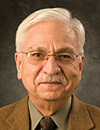How are Your Organizations Deterring the Fraudulent Flow of Intellectual Property Out the Door?
/LETTER FROM THE PRESIDENT
James D. Ratley, CFE
I bet your organization works extremely hard to find good employees. Weeks of intensive searching, vetting of qualifications and background checks hopefully yield hardworking, loyal colleagues. Of course, you know all that cultivation still can yield some rotten apples.
Ryan Duquette, CFE, CFCE, author of the latest Fraud Magazine cover article, "Insider threats! Using digital forensics to prevent intellectual property theft," quotes studies that show that half of all departing employees leave with confidential company information — either deliberately or unintentionally. That's sobering. How are your organizations deterring the fraudulent flow of intellectual property out the door?
Because most fraud examinations focus on establishing if, and how, someone did what they're suspected of doing, the author writes, they must learn fraudsters' common methods to remove sensitive information. These include the obvious means, such as personal webmail accounts, portable storage media and personal devices. But they also include accessing corporate systems via remote sessions and cloud storage.
Duquette emphasizes that fraud examiners should be part of the everyday work routines to examine new and leaving employees. "Your input and expertise is vital because you might see different patterns and suggest other methods, which could help examine broader fraud matters in your organization,” he writes.
Fraud examiners can use their skills at observing behaviors to help their organizations, he explains, such as looking for those who take proprietary information home via thumb drives or email without authorization, and inappropriately seek or obtain proprietary or classified information on subjects not related to their work duties.
Duquette also says we can help by looking for those who disregard the organization's computer policies on installing personal software or hardware, access restricted websites, conduct unauthorized searches or download confidential information.
As always, we have to review local, regional and national privacy laws and regulations on examining employees, which seem to change daily around the world.
"If the employee’s role grants them privileged access to highly confidential data such as payment card numbers, personally identifiable information or financial information, there's a risk that your activities might result in compliance issues," Duquette writes. "For example, you might locate payment card and transactional data and duplicate it to present as evidence. That action, while well intended, might be in a contravention of a policy or control that you've agreed to adhere to because you're moving the data outside of a controlled environment."
As Duquette implores, don't let departing employees leave with valuable intellectual property. Use digital forensics in daily workflows before they resign and in exit interviews to prevent IP theft rather than potentially be involved in litigation after they're gone.
Read more about the cover article and more at Fraud-Magazine.com.




